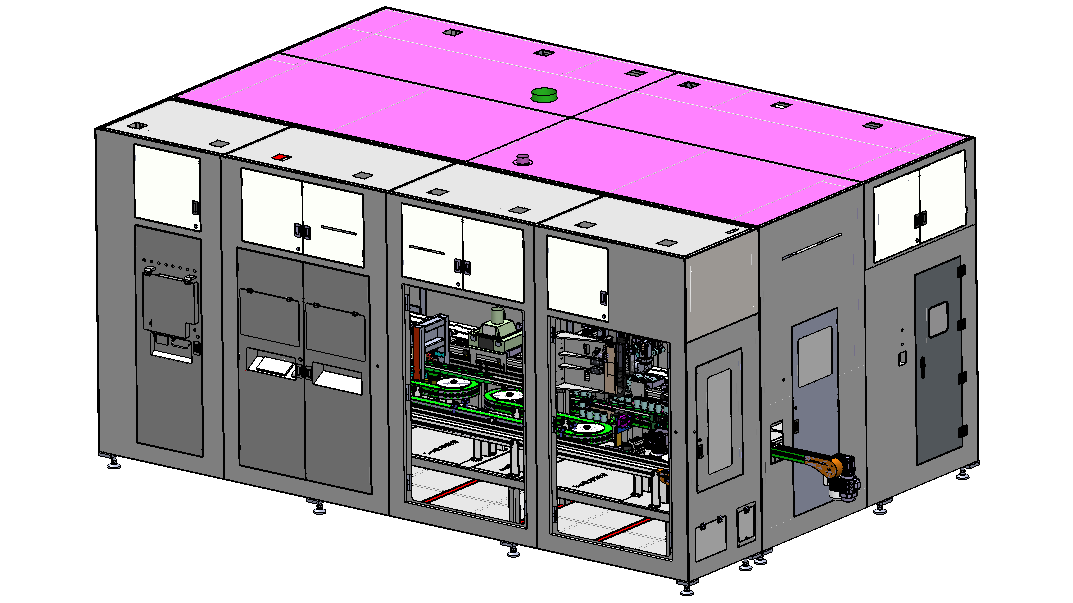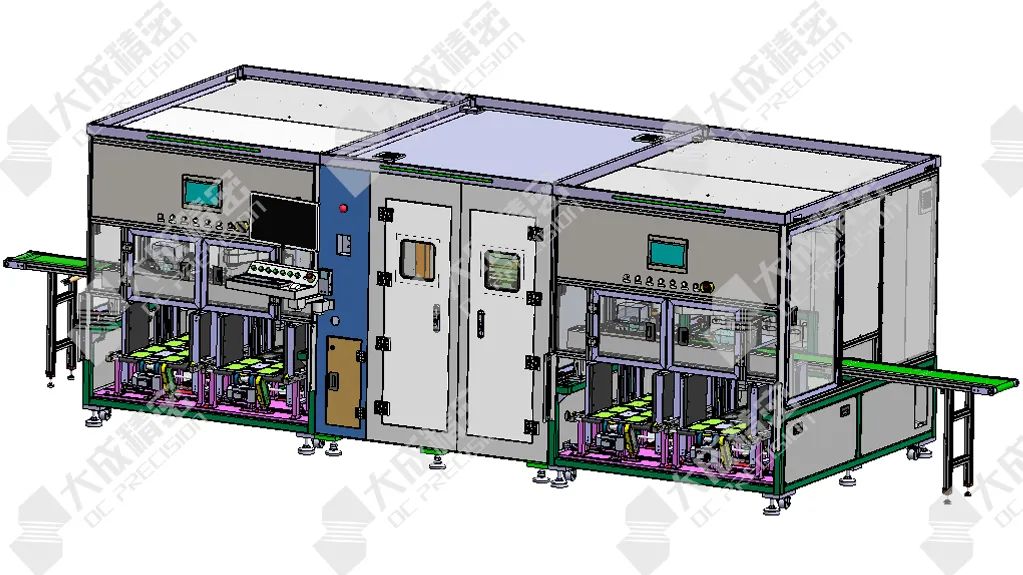As we mentioned before, a typical lithium-ion battery manufacturing process can be divided into three stages: the front-end process (electrode manufacturing), middle-stage process (cell synthesis), and back-end process (formation and packaging). We previously introduced the front-end process, and this article will focus on the middle-stage process.
The middle-stage process of lithium battery manufacturing is the assembly section, and its production goal is to complete the manufacturing of cells. Specifically, the middle-stage process is to assemble the (positive and negative) electrodes made in previous process with the separator and electrolyte in an orderly manner.
Due to the different energy storage structures of different types of lithium batteries including prismatic aluminum shell battery, cylindrical battery and pouch battery, blade battery, etc., there are obvious differences in their technical process in the middle-stage process.
The middle-stage process of prismatic aluminium shell battery and cylindrical battery is winding, electrolyte injection and packaging.
The middle-stage process of pouch battery and blade battery is stacking, electrolyte injection and packaging.
The main difference between the two is the winding process and stacking process.
Winding
The cell winding process is to roll the cathode, anode and separator together through winding machine, and the adjacent cathode and anode are separated by separator. In the longitudinal direction of cell, the separator exceeds anode, and the anode exceeds cathode, so as to prevent short-circuited caused by the contact between the cathode and anode. After winding, the cell is fixed by the adhesive tape to prevent it from falling apart. Then the cell flows to the next process.
In this process, it is significant to ensure that there is no physical contact between the positive and negative electrodes, and that the negative electrode can completely cover the positive electrode in both horizontal and vertical directions.
Due to the characteristics of winding process, it can only be used to manufacture lithium batteries with regular shape.
Stacking
In contrast, the stacking process stacks the positive and negative electrodes and the separator to form a stack cell, which can be used to manufacture lithium batteries of regular or abnormal shapes. It has a higher degree of flexibility.
Stacking is usually a process in which the positive and negative electrodes and the separator are stacked layer by layer in the order of positive electrode-separator-negative electrode to form a stack cell with the current collector as the tabs. Stacking methods range from direct stacking, in which the separator is cut off, to Z-folding in which the separator is not cut off and is stacked in a z-shape.
In the stacking process, there is no bending phenomenon of the same electrode sheet, and there is no “C corner” problem encountered in the winding process. Therefore, the corner space in the inner shell can be made full use of, and the capacity per unit volume is higher. Compared with the lithium batteries made by winding process, lithium batteries made by stacking process has obvious advantages in energy density, security, and discharge performance.
The winding process has relatively longer development history, mature process, low cost, high yield. However, with the development of new energy vehicles, stacking process has become a rising star with high volume utilization, stable structure, low internal resistance, long cycle life and other advantages.
Whether it is winding or stacking process, both of them have obvious advantages and disadvantages. Stack battery requires several cut-offs of the electrode, resulting in a longer cross-section size than the winding structure, increasing the risk of causing burrs. As for winding battery, its corners will waste space, and uneven winding tension and deformation may cause unhomogeneity.
Therefore, subsequent X-ray test becomes extremely important.
X-ray testing
The finished winding and stack battery should be tested to check whether their internal structure conforms to production process, such as the alignment of stack or winding cells, the internal structure of tabs, and the overhang of positive and negative electrodes, etc., so as to control the products quality and prevent the flow of unqualified cells into the subsequent processes;
For X-Ray testing, Dacheng Precision launched a series of X-Ray imaging inspection equipment:
X-Ray offline CT battery inspection machine
X-Ray offline CT battery inspection machine: 3D imaging. Though section view, the overhang of cell’s length direction and width direction can be detected directly. Detection results will not be affected by electrode chamfer or bend, tab or ceramic edge of cathode.
X-Ray in-line winding battery inspection machine
X-Ray in-line winding battery inspection machine: This equipment is docked with the upstream conveyor line to achieve automatic battery cells pickup. Battery cells will be put into the equipment for internal cycle testing. NG cells will be picked out automatically. Maximum 65 layers inner and outer rings are full inspected.
X-Ray in-line cylindrical battery inspection machine
The equipment emits X-rays through X-Ray source, penetrates through battery. X-ray imaging is received and photos are taken by the imaging system. It processes the images through self-developed software and algorithms, and automatically measures and determines whether they are good products, and picks out bad products. The front and back end of the device can be connected with the production line.
X-Ray in-line stack battery inspection machine
The equipment is connected with upstream transmission line. It can take cells automatically, place them into equipment for internal loop detection. It can automatically sort NG cells, and OK cells is automatically put onto the transmission line, into the downstream equipment to achieve fully automatic detection.
X-Ray in-line digital battery inspection machine
The equipment is connected with the upstream transmission line. It can take cells automatically or perform manual loading, and then put into the equipment for internal loop detection. It can automatically sort the NG battery, OK battery removal is automatically put into the transmission line or plate, and sent to the downstream equipment to achieve fully automatic detection.
Post time: Sep-13-2023














